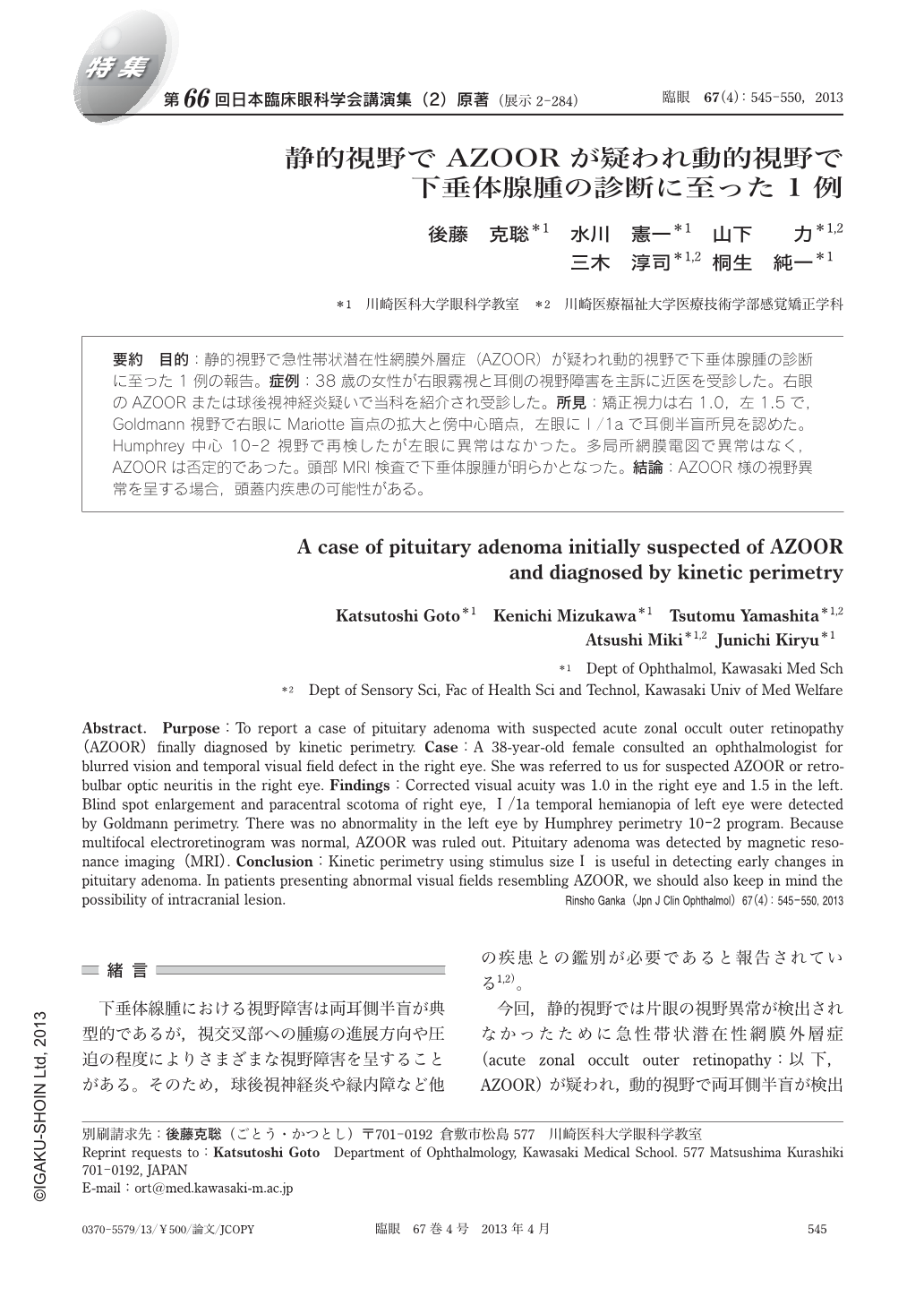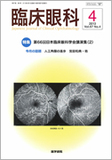Japanese
English
- 有料閲覧
- Abstract 文献概要
- 1ページ目 Look Inside
- 参考文献 Reference
要約 目的:静的視野で急性帯状潜在性網膜外層症(AZOOR)が疑われ動的視野で下垂体腺腫の診断に至った1例の報告。症例:38歳の女性が右眼霧視と耳側の視野障害を主訴に近医を受診した。右眼のAZOORまたは球後視神経炎疑いで当科を紹介され受診した。所見:矯正視力は右1.0,左1.5で,Goldmann視野で右眼にMariotte盲点の拡大と傍中心暗点,左眼にⅠ/1aで耳側半盲所見を認めた。Humphrey中心10-2視野で再検したが左眼に異常はなかった。多局所網膜電図で異常はなく,AZOORは否定的であった。頭部MRI検査で下垂体腺腫が明らかとなった。結論:AZOOR様の視野異常を呈する場合,頭蓋内疾患の可能性がある。
Abstract. Purpose:To report a case of pituitary adenoma with suspected acute zonal occult outer retinopathy(AZOOR)finally diagnosed by kinetic perimetry. Case:A 38-year-old female consulted an ophthalmologist for blurred vision and temporal visual field defect in the right eye. She was referred to us for suspected AZOOR or retrobulbar optic neuritis in the right eye. Findings:Corrected visual acuity was 1.0 in the right eye and 1.5 in the left. Blind spot enlargement and paracentral scotoma of right eye, Ⅰ/1a temporal hemianopia of left eye were detected by Goldmann perimetry. There was no abnormality in the left eye by Humphrey perimetry 10-2 program. Because multifocal electroretinogram was normal, AZOOR was ruled out. Pituitary adenoma was detected by magnetic resonance imaging(MRI). Conclusion:Kinetic perimetry using stimulus sizeⅠ is useful in detecting early changes in pituitary adenoma. In patients presenting abnormal visual fields resembling AZOOR, we should also keep in mind the possibility of intracranial lesion.

Copyright © 2013, Igaku-Shoin Ltd. All rights reserved.


